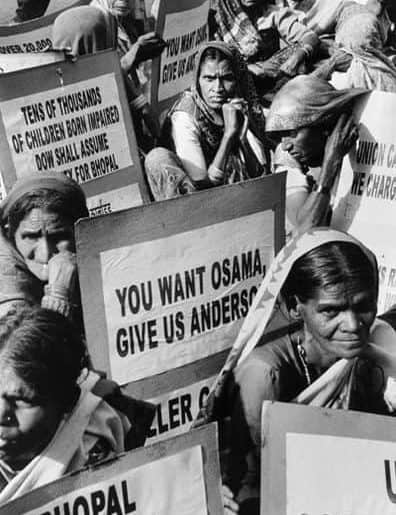The incident:
The plant was was built in 1969 to produce the pesticide Sevin (UCC’s brand name for carbaryl) using methyl isocyanate (MIC) as an intermediate. In November 1984, most of the safety systems were not functioning and many valves and lines were in poor condition. In addition, several vent gas scrubbers had been out of service as well as the steam boiler, intended to clean the pipes. One of the major issue was that Tank 610 contained 42 tons of MIC which was much more than what safety rules allowed. During the night of 2–3 December 1984, water entered Tank E610 containing 42 tons of MIC. A runaway reaction started, which was accelerated by contaminants, high temperatures and other factors. This forced the emergency venting of pressure from the MIC holding tank, releasing a large volume of toxic gases. About 30 metric tons of methyl isocyanate (MIC) escaped from the tank into the atmosphere in 45 to 60 minutes.
Casualties:
The tragedy also left over 550,000 people with partial or chronic injuries and ailments. The effects of these ailments were seen for years after the disaster, and can be seen even today. Bhopal saw a dramatic rise in its stillbirth and neonatal mortality rates?the stillbirth rate increased by almost 300%, and the neonatal mortality rate by nearly 200%. Hundreds of children were born with physical deformities or other problems. Even today, 30 years later, several innocent children suffer from the aftermath of the gas tragedy?they are born with physical or mental defects.
In June 2010 a court in India handed down a verdict in the case. It found Union Carbide India Ltd. and seven executives of the company guilty of criminal negligence.
Lawsuit:
The company was required to pay a fine of 500,000 rupees ($10,870) and the individuals were each sentenced to two years in prison and fined 100,000 rupees ($2175) a piece. The names of those convicted are: Keshub Mahindra, former non-executive chairman of Union Carbide India Limited; V. P. Gokhale, managing director; Kishore Kamdar, vice-president; J. Mukund, works manager; S. P. Chowdhury, production manager; K. V. Shetty, plant superintendent; and S. I. Qureshi, production assistant.
On 2 August 2010, the Indian Central Bureau of Investigation filed a petition with the Supreme Court seeking a harsher punishment for the accused in this case. This petition sought to reinstate charges of culpable homicide against the accused; a September 1996 order had reduced the charges from culpable homicide to criminal negligence.
In May 2011, the Supreme Court rejected this petition and declined to re-open the case to reinstate the harsher charges.
Sources: http://bettercallsaul.quora.com/1984-Bhopal-Gas-Tragedy
http://www.buzzle.com/articles/facts-and-figures-about-the-bhopal-gas-tragedy.html

